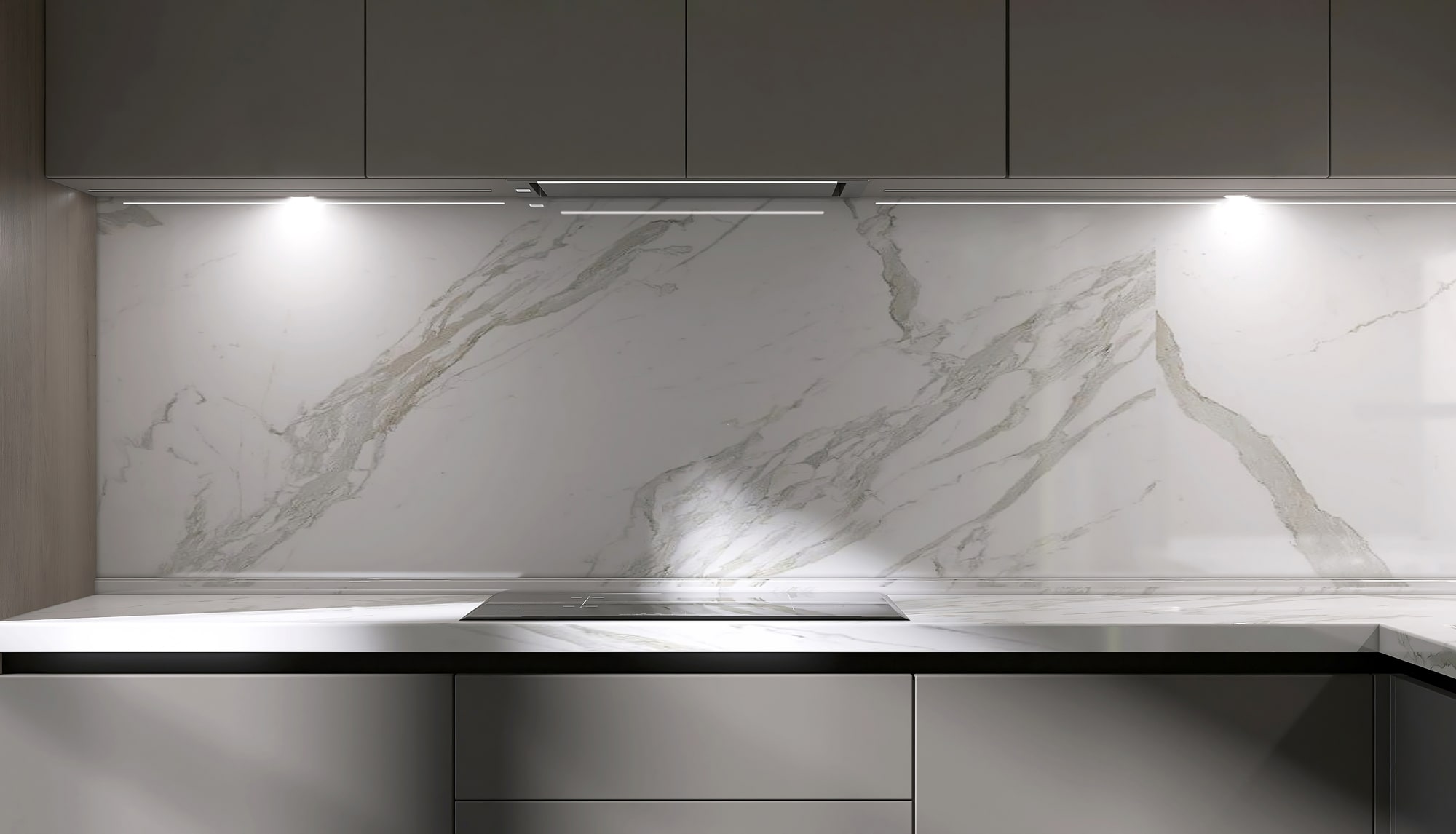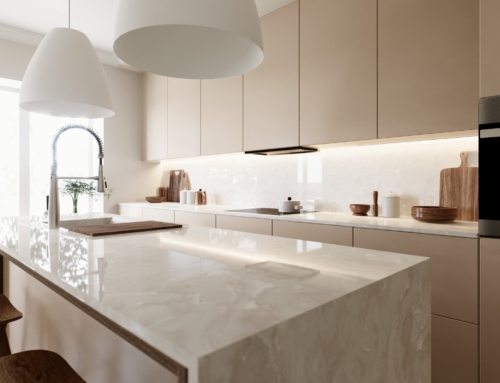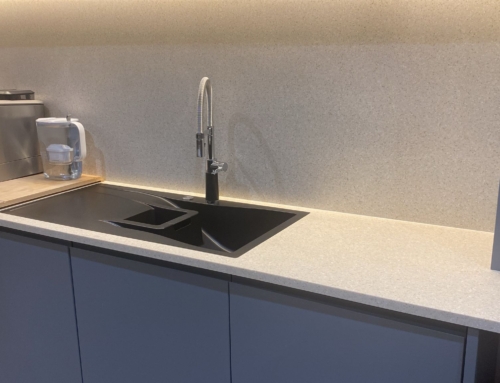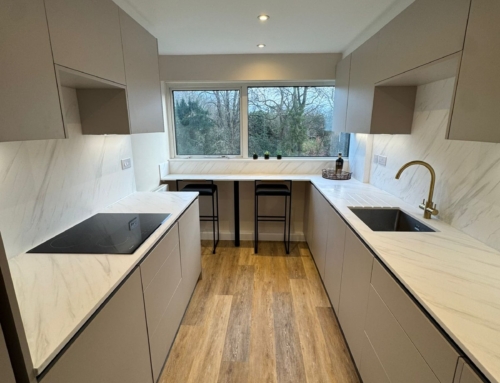Kitchen splashbacks (sometimes called ‘backsplashes’) are a popular addition when replacing your worktops. However, choosing the right splashback is the key to giving this detail the impact it deserves. A well-designed splashback can complement your worktop style and bring all the design elements together for an attractive (and functional) space.

But how do you pick the right splashback for your kitchen worktop? Here’s our quick guide.
Do you really need a splashback?
Splashbacks aren’t a strict requirement, but they’re often recommended, especially behind areas like hobs and sinks. It can protect your painted walls from stains like grease marks and water damage, making maintenance easy while extending the life of your kitchen design. Beyond function, backsplashes are also a striking feature, giving kitchens a polished and cohesive finish.
How to choose kitchen splashback ideas?
When choosing a splashback, begin by thinking about how you use your kitchen. For example, if you’re a frequent baker or cook lots, easy-to-clean materials are best. Aesthetically, your splashback needs to work in harmony with cabinetry, flooring, and, of course, your kitchen worktops. If you partner with a worktop expert like Olly London, we can recommend some of the best splashback styles for your chosen worktop design and edging options.
Should splashbacks match the worktop?
Matching splashbacks and worktops create a seamless appearance, especially if you’re using luxury materials like granite or quartz. However, contrast can also produce beautiful effects. For example, a bold-coloured glass splashback against a neutral worktop adds character to a space. It really comes down to the vibe you want – subtle cohesion vs eye-catching contrast.
What colour should a splashback be?
The right colour depends on your overall kitchen palette. Neutral hues like grey, beige or white are timeless and suit most worktops. If you’re going for a minimalist vibe, a pop of colour in your splashback can add more warmth to the space. Alternatively, if your new worktops are quite bold in appearance, a muted splashback can balance the overall look.
Should a kitchen backsplash be lighter or darker than a countertop?
While there’s no defined rule for this, contrast often works well. A darker worktop with a lighter splashback can make a kitchen feel open and airy, while a dark splashback paired with lighter counters adds depth and drama. Or, if you’re going for a monochrome design scheme, keep everything within a few tones for a smoother finish with tonnes of elegance.
Should splashbacks go on before or after worktops?
Typically, worktops are installed before splashbacks. This process ensures a cleaner and tighter finish where the splashback meets the counter. Seals will be more secure. Installing splashbacks afterwards also reduces the risk of damage during the worktop fitting.
Need a worktop and splashback installer? Contact us
Get in touch with the kitchen worktop experts at Olly London. We’re a leading worktop installer for the South East, covering Cranleigh, Crawley and Dorking.
Contact us now.






